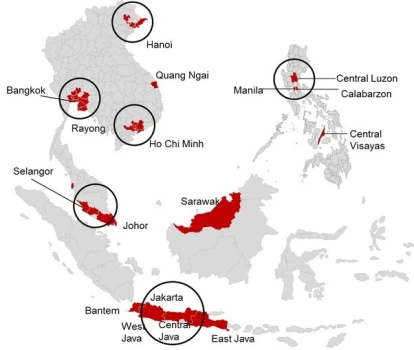The original expression “Hire for attitude, train for skills” is attributed to Herb Kelleher, a co-founder and past-CEO of US low-cost company Southwest Airlines. The concept is very simple: the company would prioritize candidates with desired behavior traits, in the case of Southwest Airlines, the “warrior spirit”, and mold junior employees with robust onboarding processes. The airline executives confidently state that they rather hire hungry young talent rather than industry veterans.
Skills change too fast to be a strict requirement
Back to 2022, skills are the fundamental platform on which modern job missions are built. Every modern complex office job requires 5-10 core capabilities which themselves can be broken down into sub-skills and softwares. The Digital Marketing competency, for example, can be broken down into dozens of sub-skills ranging from technical SEO to the ability to monitor digital advertising campaigns. The speed with which skills are being transformed and the diversity of tools available means it is pointless to strictly filter candidates on skills only. In Southeast Asia, where talent demand already exceeds the offer, finding a perfect candidate skill match only is unlikely. It would ultimately lead to a reduction in profiles diversity and shrink the talent pool to a point where positions stay vacant too long, making hiring costs creep up (#).
Hire for traits
When hiring, HR directors need to be thinking about the type of person they would like to bring on board, and how those traits will help new recruits fit and perform in the organization. In a sense, when looking for skills on a resume, you are looking in the past. By looking at candidates through the lens of behavior, you are projecting them in your future. You may choose, like Southwest Airlines, to develop a company culture around a particular set of behaviors or shared company values, or, maybe more pragmatically, to look for specific behaviors in particular positions. Here are some popular hiring traits Huneety supports to identify in Southeast Asia: team player, problem solver, critical thinker, good communicator, empathic, relationship builder, active listener, and the list goes on. It’s hard to tell those things from looking at a resume: behavior assessments and reference checks will help you cut through the noize and spot patterns in candidates’ work behaviors, which then can be explored further in interviews.
Know which skills to focus on and build learning loops
Onboarding people with “junior” skillsets means they will need to absorb the way the company operates, which will require some structure. Hopefully, hiring on behavior will have cut down on the time to recruit the perfect “unicorn candidate”, and resources could be redeployed to strengthen skills strategy and onboarding. For the company, this means a few things: knowing which are the skills required to perform in each position, having an onboarding plan, and somewhere down the line, being able to measure the skills acquired. Any skill gap should be then addressed with an Individual Development Plan. All those steps can be automated to some extent, or outsourced to L&D partners like Huneety.
Infuse a culture of skills in your organization
Skill culture is not an additional layer of HR responsibility. Rather it should infuse into existing HR and management duties. A good first step is to agree on language: define and list the required skills for each position and consolidate at the company level. Managers should collaborate to the skills strategy of their department, and make it clear which skills are required. Managers should also act as “guardians” of the Individual Development Plans, and should take responsibility for pushing their execution and rollout. In many companies, scheduled actions stay on paper, and by the end of the year, need to be written off. A good way to add a sense of urgency is to connect management KPIs to direct report IDPs completion.
Should Southeast Asia “hire for behavior, train for skills”?
In many companies, the myth is long gone, the transformation into a talent factory is already a reality. The combined effect of slowing down demographics, robust economic growth rates in Asia, and rather inadequate academic programs have already forced companies to set up their own “academies” and training programs. This is a necessary switch to make sure the talent pipeline remains open to fuel the future growth of the organization. This creates positive loops: by strengthening employer branding with learning opportunities, companies can attract more candidates from more diverse backgrounds. Learning has as powerful effects on retention too: as junior profiles get trained and climb up the corporate ladder, they stick to the company and fuel its long-term growth.
About Huneety
Huneety is Southeast Asia Talent sourcing platform connecting talents to opportunities. We help organizations navigate talent shortages by creating new talent pools of qualified applicants. With Huneety you can quickly find, assess, and select the right talents according to your unique skills, behaviors, and cultural fit requirements.





